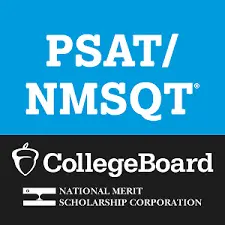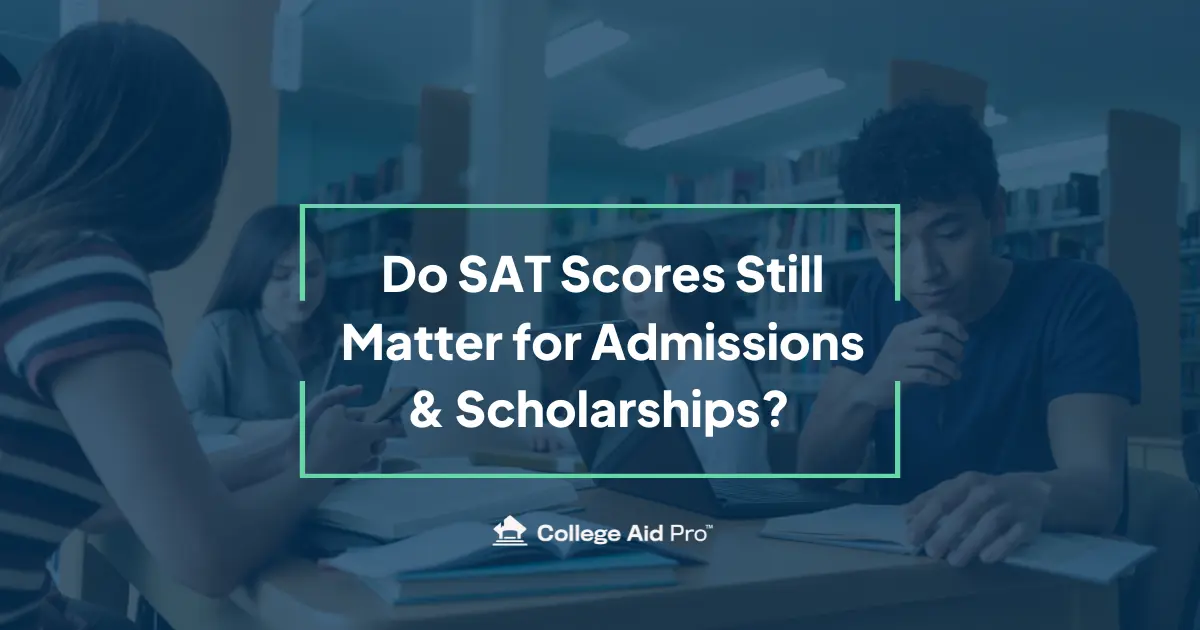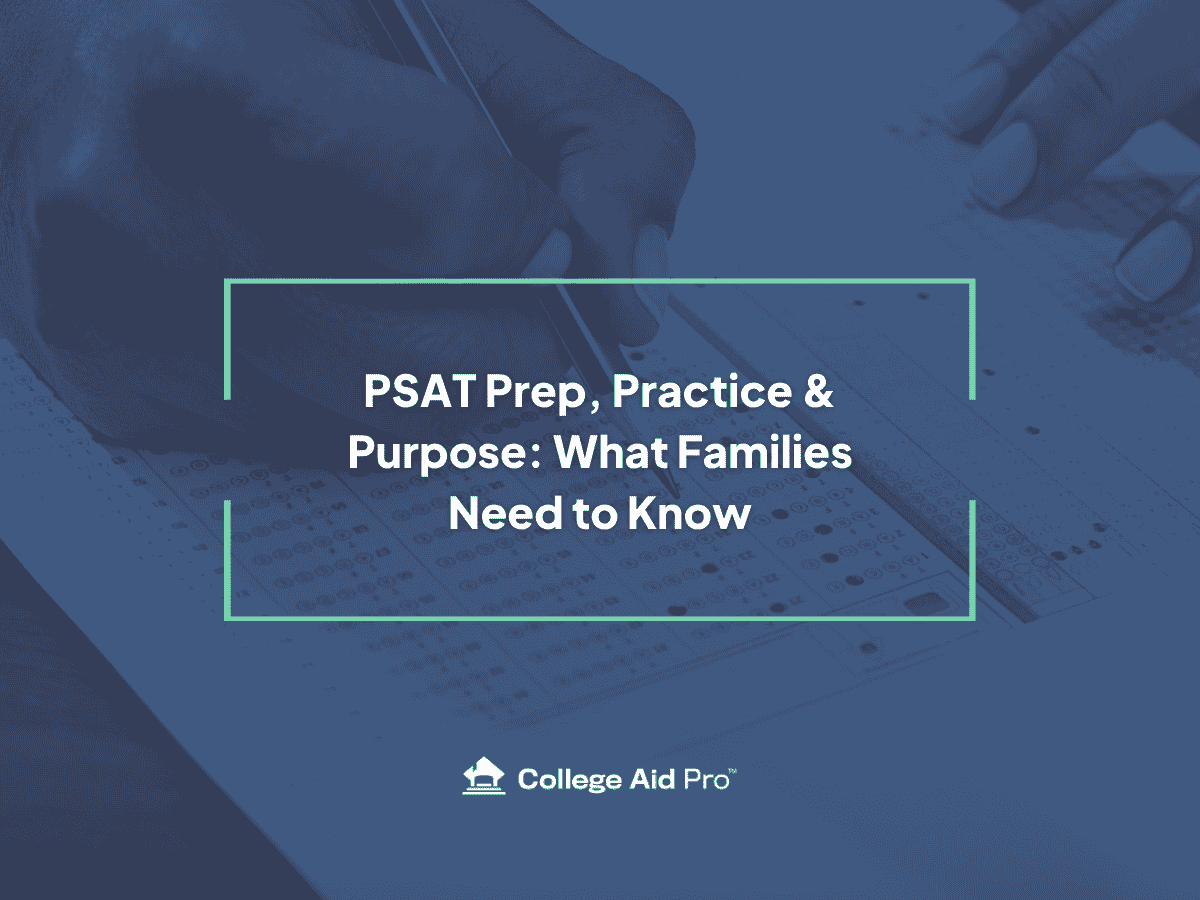 If you’re a high school student, you’ve probably heard of the PSAT. But what is it really, and is it a required test? First off, no, it’s not a required test for any high schooler! But it does provide many benefits and possible scholarship opportunities. In this article, we’ll walk you through the basics of the PSAT/NMSQT and some recent changes that will affect anyone taking the test this fall.
If you’re a high school student, you’ve probably heard of the PSAT. But what is it really, and is it a required test? First off, no, it’s not a required test for any high schooler! But it does provide many benefits and possible scholarship opportunities. In this article, we’ll walk you through the basics of the PSAT/NMSQT and some recent changes that will affect anyone taking the test this fall.
What is the PSAT and who takes it?
The PSAT/NMSQT, which stands for Preliminary SAT/National Merit Scholarship Qualifying Test, is a test designed specifically for high school students, typically taken in their sophomore or junior year. It’s like a practice round for the SAT, hence the Preliminary or “P” in the title. But the PSAT/NMSQT serves another purpose. It is the test taken to qualify for National Merit Scholarships.
If you are taking the test in the 10th grade, also known as the PSAT 10, think of it as a practice-practice test. It’s your practice SAT first and foremost. You are getting comfortable with test, figuring out what you are comfortable with and what you may need to work on to improve.
It’s also your low-pressure chance to try out the test before next year when it counts for National Merit consideration. As a sophomore, you are not eligible for the National Merit program.
If you are taking the test in the 11th grade, this is your opportunity to qualify as a National Merit Semifinalist or Finalist based on your final score. Remember though, even if you don’t make the cutoff for National Merit, the PSAT as a junior is NOT a waste of time or energy. It is still another opportunity to take a test that is modeled after the SAT.
The National Merit Scholarship Competition
This is a scholarship program open to all U.S. high school students. There are four types of National Merit Scholarships
- National Merit $2500 Scholarships – awarded to finalists on a state level
- National Merit Special Scholarships – awarded to around 800 program participants who are not named finalists through business organizations and corporations. You are required to submit a separate entry form to the sponsor organization and winners are chosen by the National Merit Scholarship Corporation’s (NMSC) professional staff.
- Corporate-Sponsored Merit Scholarship awards – awarded to children of employees or members of a specific corporation, residents in a community where the corporate sponsor operates, or Finalists with career plans the sponsor wants to encourage.
- College-Sponsored Merit Scholarship awards – awarded by individual colleges who offer scholarships to National Merit Finalists who have been accepted for admission AND indicated the specific college as their first choice to the NMSC.
The National Merit Scholarship Corporation, who sponsors these scholarships, does so in order to recognize students who earn exceptionally high scores (the top 1% score in their state) on their PSAT.
According to the National Merit Student Guide here are the steps for the 2025 Scholarship Competition, that means students who are in 11th grade this school year.
October 2023– Roughly 1,300,000 high school juniors will take the PSAT/NMSQT
April 2024– NMSC will send a list of 50,000 high-scoring participants to high school principals so they can check for any errors or changes in eligibility whose score will qualify them for recognition in fall of 2024.
Early September 2024– about one third of the 50,000 high scorers (around 16,000 students) will be notified, through their school, that they have qualified as Semifinalists. These are the highest scoring students in each state. They will receive scholarship application materials to advance in the competition for National Merit Scholarships offered in 2025.
Late September 2024– more that two thirds of the 50,000 high scorers (around 34,000 students) will be notified, through their school, that they have qualified as commended students. These students will receive a letter of commendation. Although commended students are not eligible to compete for National Merit Scholarships, some may be candidates for the National Merit Special Scholarships.
February 2025– Of the 16,000 Semifinalists, 15,000 will be notified that they have advanced to Finalists and will receive a certificate of merit, based on academic requirements and other requirements laid out by the NMSC.
March 2025– 7,140 Merit Scholarship winners will be notified. These students will receive a National Merit $2,500 Scholarship, a corporate-sponsored scholarship, or a college-sponsored scholarship.
March 2025– 740 Special Scholarship winners will be notified. These winners did not qualify as Finalists but were chosen from candidates who received scholarship applications through their high school in November of 2024.
When do you take the PSAT?
The PSAT/NMSQT is offered sometime during the month of October. The testing window is between October 2 and October 31. The test can be offered any weekday during this time period or on Saturday, October 13th. Check with your school counselor or guidance office to find out the exact date your school is offering it this year.
You register to take the exam through your school. Usually the end of August to the first week of September is when school’s offer registration. You can’t register through an external website, it must be done through your school.
If you haven’t heard anything about dates or registration times for your school yet, reach out to your school counselor or your guidance office. They should be able to help you.
What is on the PSAT?
Remember, the P stands for preliminary. So that means that the PSAT/NMSQT mirrors the SAT in terms of its user interface, format, and question styles. There is a Reading and Writing section, and a Math section.
For the Reading and Writing section, test-takers have a total of 54 questions divided into 2 separate modules. Each module is 32 minutes.
The Math section has a total of 44 question divided into 2 separate modules as well. Each of these modules is 35 minutes long.
Each module is timed individually. You’ll be required to complete the first module of each sections before moving on to the next, and you can’t go back to the first module to change any answers.
The PSAT is digital
The PSAT/NMSQT will no longer be in a paper format. You will take the test on a digital device instead of a paper booklet. You’ll access the test through College Board’s digital app called Bluebook. You should have the option to take the exam on your own laptop or with a school desktop, laptop, or Chromebook, but double check with your school for their specific guidelines.
If you’re using your own laptop, you’ll want to download the app before your testing day and familiarize yourself with the platform. On your testing day, you will access, take, and submit the PSAT completely online through the app.
Why did the PSAT move to a digital format? Because the SAT is moving to a fully digital format the October 2023 so it’s a great chance for students to try it out on the PSAT before sitting for a digital SAT.
Is anything changing on the digital format?
There are some changes to the digital version of the PSAT
- The digital PSAT/NMSQT is shorter!
- The test will now be 2 hours and 14 minutes long. That’s 30 minutes less that the paper version. The digital version has a total of 98 questions where the paper version had 139 questions.
- The testing content will focus more on measuring skill you need to be ready for college or a future career
- This means that questions may be shorted and focus more on assessing core skills you need for the future
- The reading passages will be shorter and tied to a single question.
- The word problems will be shorter and more direct as well.
- You can use a calculator on both of the math sections.
- The digital version will be an adaptive test. This means the test will adapt to how well you perform. The first module of each section (reading and writing, and math) will have a variety of questions that are easy, medium, and hard. The difficulty of the questions in the section module will depend on how well you did in the first module. So the second module on both sections will be either easier or harder than the first module based on your performance.
- You’ll get your scores back much faster than before. If you take the PSAT in the first half https://youtu.be/gY6iJ1u8y28?si=O3DGlY2l9evi9t6-of October, you should have your test scores on November 6th. If you take it the second half of October, scores will be released on November 16th. Either way, you’ll have them before Thanksgiving this year!
Now what?
If you’re interested in taking the PSAT/NMSQT and you are a sophomore or junior, reach out to your guidance counselor soon. You don’t want to miss a registration deadline!
If you are a sophomore taking it for the first time, take a deep breath and give it your best shot! Remember, this one doesn’t “count”, but you’ll learn the areas you are strong in, and the areas you could us some extra practice in. This is important not only if you want to take the as a junior to try and qualify for National Merit, but also if you plan on taking the SAT. And yes, the SAT will be digital this year as of October!
If you are a junior taking it to try and receive National Merit status, take an even deeper breath and trust yourself! Have a confidence in what you know, read the questions carefully, eliminate answers that you know are wrong, and go with your gut.
Regardless of your results, this test DOES NOT define you. It shows how well you were able to take a particular test, on a particular day, with a particular set of questions. If you don’t end up with a score in the top 1% of your state, guess what, you’re in the majority along with the other 99% of students who took it. And there are many other ways to receive merit money for college!
There’s still a lot of high school and college planning and prep to do, so focus on what in ahead of you and keep moving forward. Your future looks so bright.



